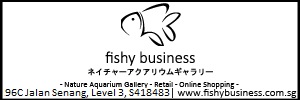My Hanna tds meter (same as a conductivity meter but calibrated for tds) is my most frequently used fishroom measurement.
If the water tds (or conductivity) is abruptly changed, it can cause great distress in fish. This is because they need to adjust the cell-wall regulatory processes to keep the fresh water and the body fluids at different concentrations. That takes from a few minutes (for tiny fish) to a couple of days (as for salmon going from sea to river to spawn).
Whenever I do water changes or ship fish, I make sure that the tds is not different by a factor of two or more. That is, I don't take fish from 200 ppm water and dunk them suddenly in 60 ppm water. That would cause water to rush into gill cells and skin cells and make them swell, just like your finger skin does in a bathtub or sink when washing dishes. If the difference is great enough, they can actually rupture, and do permanent gill damage.
The effect is called "osmotic shock," and is the probable cause of about 90% of "pH shock" mythology. Ammonia handles the other 10%.
If you plan to buy one, get one with the greater range, rather than one with high resolution. My US$15 Hanna Instruments meter reads to 1 ppm, but only has a range to 999 ppm. I would prefer the one that is 10X less sensitive that reads to 1999 ppm.
BTW, get one calibrated for tds as that will let you communicate better with most aquarists, who don't know the conversion factor from microSeimens. 
Wright
01 760 872-3995
805 Valley West Circle
Bishop, CA 93514 USA










 Reply With Quote
Reply With Quote




Bookmarks